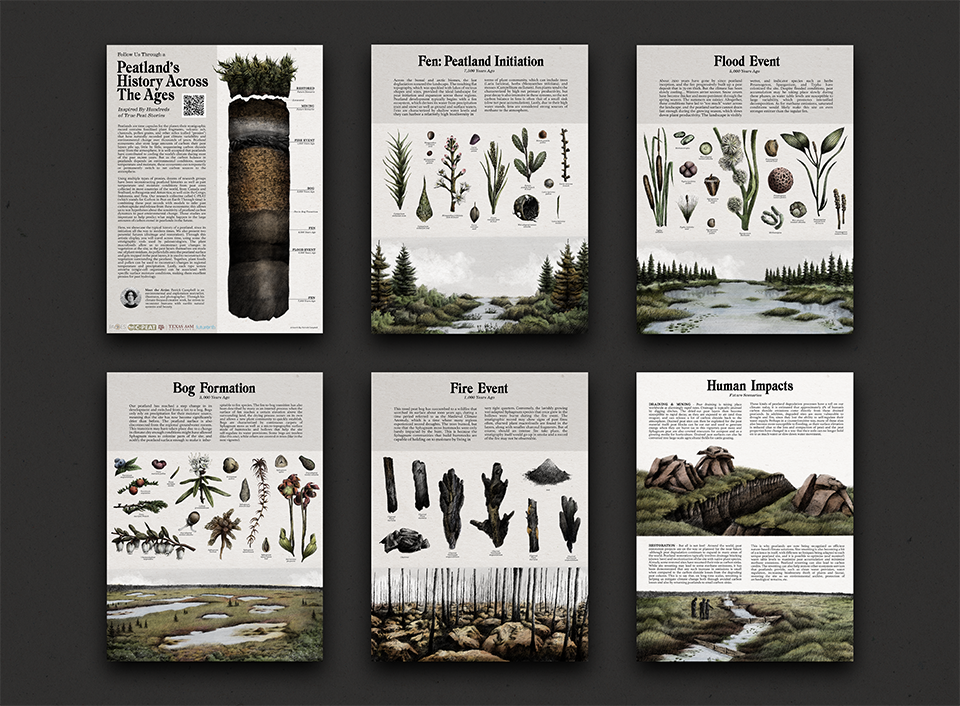- Home
- Science Introduction
- Wg
- Peat Carbon
- C-PEAT At COP26
C-PEAT at COP26
COP26 in Glasgow, Scotland, 5 November 2021
C-PEAT, in collaboration with PAGES and Future Earth, took part in the United Nations’ Framework Convention on Climate Change (COP26). The C-PEAT team was presented at the Peatland Pavilion, organized by the Global Peatlands Initiative.
The following pieces were prepared for the event:
1. Interactive Peatland Map: with this map, the group showcases >75 sites from 20 countries that have been studied by the C-PEAT scientific community. The map is combined with a real peat core library (photos to come). This part of the exhibit helps people appreciate where peatlands are located and what peat looks like. The peatland map layer (in green) comes from a recent scientific publication by Xu et al. To see pictures and videos from the study site, and access site information, simply click on the purple markers on the map below. The map was created by Sedrick Utt, an undergraduate student researcher in the Department of Geography at Texas A&M University.
2. Artistic rendition of peatland landscapes: Patrick Campbell has drawn a peat core and 6 landscapes that represent different stages in a peatland's development, as they would be inferred from different proxies (which he also drew). This part of the exhibit conveys that peatlands are beautiful ecosystems and valuable archives of past environmental change that can be used to help inform land management and restoration/conservation efforts. The artist has also created a GIS StoryMap on peatlands.
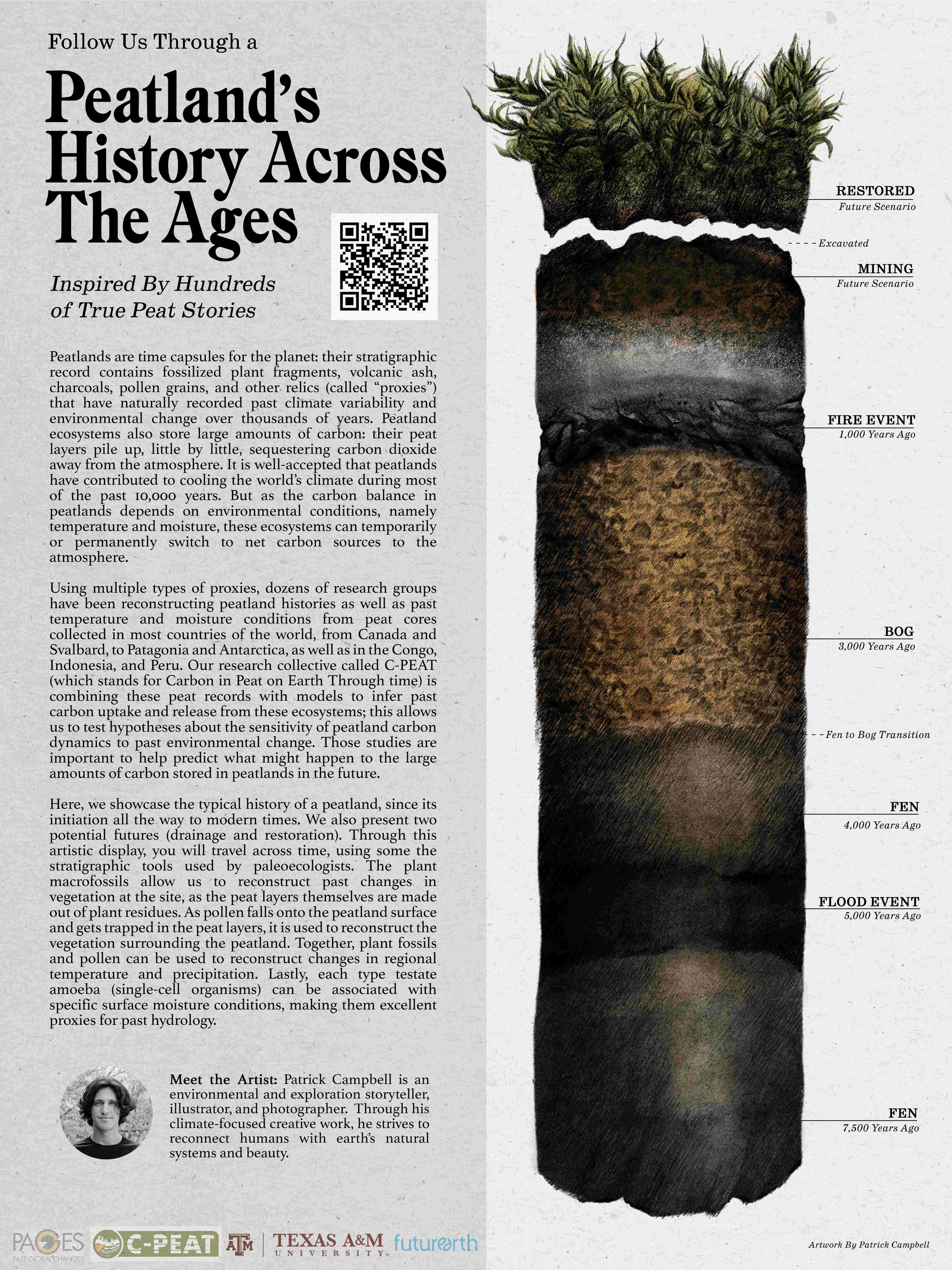
Fig.1 Peatland's History Across The Ages |
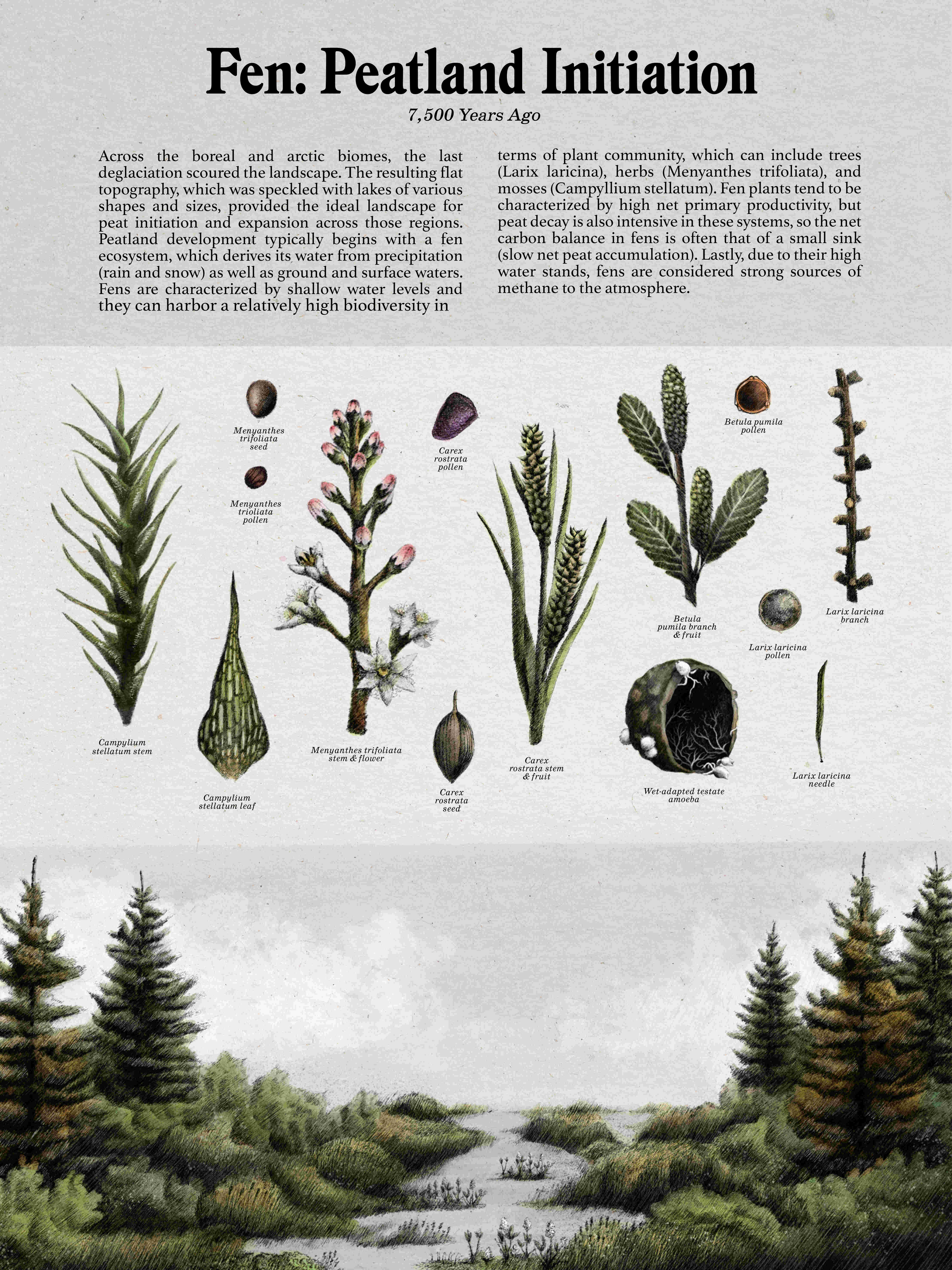
Fig.2 Fen: Peatland Initiation |
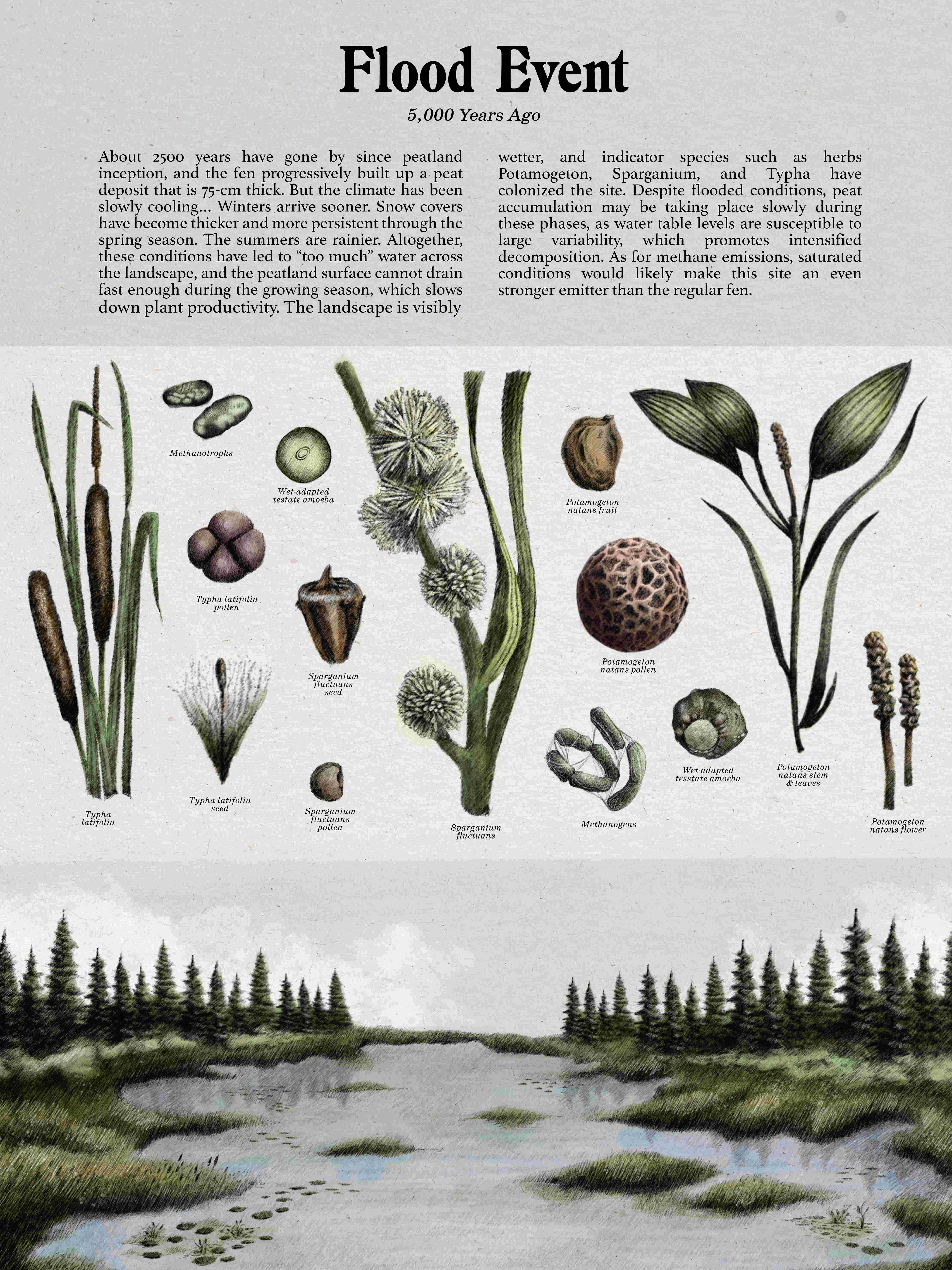
Fig.3 Flood Event |

Fig.4 Bog Formation |
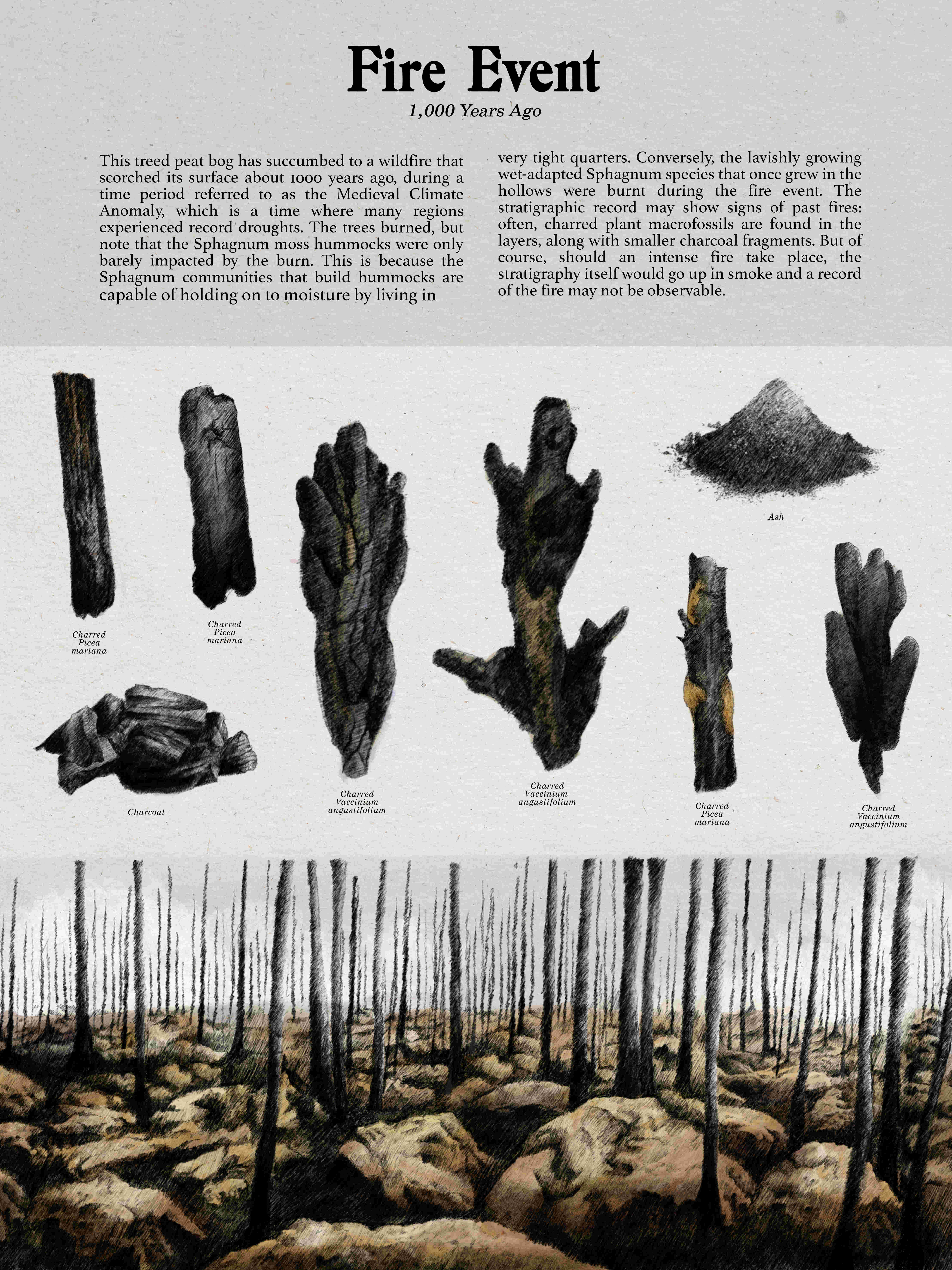
Fig.5 Fire Event |

Fig.6 Human Impacts |
Julie Loisel and Angela Gallego-Sala, the C-PEAT working group leaders, and COP26 attendees, summarize their experience as follows in the December 2021:
"Last month, in Glasgow, Angela and I had the privilege to present peatland research on behalf of C-PEAT and Future Earth at COP26, in the Global Peatlands Pavilion. Our talk, "Getting to know peatlands, the largest natural land carbon stores on Earth", generated some good discussions; it was also broadcast live and was well attended. As soon as the recording is available, we will share the link with you. The talk focused on "How do we quantify the global peatland carbon stock?", "How does climate affect the peatland carbon sink?", "How will peatland extent change with warming?", and "Future directions". A PDF version of the slideshow is available here; feel free to use some of the slides as you see fit. The PPTX version can be requested to Angela or me. We also presented a series of 6 posters that present an artistic perspective on peatland landscapes and paleoecology (each poster can be downloaded at high resolution using the link above). We also presented an interactive map of over 75 peatland sites that are being studied by the C-PEAT community (if you wish to add your sites, contact us!). Those 2 displays will soon be added to the c-peat website.
What did we think of the COP?
It's a big operation, no doubt. We were curious to find out which opportunities existed for scientists to mingle with delegates. It turned out to be a difficult endeavour. With our "UN observer passes", we should have been able to walk in some of the negotiation rooms to "observe" the process, but covid made this impossible. As for the Peatlands Pavilion, it was well attended, and the audience did include several government delegates, but we were left unsure as to whether our voices were heard by decision makers. Many seasoned scientists and practitioners told us that this year's scientific inputs may be used to prepare next year's government pledges. This seems like a reasonable way to think about the process, especially given that heads of government announced their pledges on days 2-3 of the conference...
The Global Peatlands Pavilion was beautiful. It was also one of very few "science" pavilions. This fact alone: that peatlands are important enough to be granted a Pavilion that was well organized and filled with talks and people from around the world for an entire 2 weeks, speaks volume. At the pavilion, scientists and practitioners drew attention to the importance of peatlands in climate change mitigation, mainly as natural climate solutions. The vast majority of the other pavilions were sponsored by individual countries showcasing new technologies, ideas to reach net-zero, etc. Prior to this year, peatlands were discussed at COPs, but in a less organized way, with a few talks here and there, for example at the Indonesian pavilion or the like.
What were the main outcomes of COP26 for peatlands?
The "Glasgow Leaders’ Declaration on Forests and Land Use” pledges to halt (and perhaps reverse) global deforestation by 2030. This meaning for peatlands, as the pledge should encompass the halting of further degradation of these ecosystems. But note that the pledge is not "law"... In addition, for the first time, countries such as Chile, Peru, Indonesia, and the DRC included peatlands on their Nationally Determined Contributions.
As mentioned above, the concept of natural climate solutions was stressed at COP26, since it may help countries achieve net-zero targets by 2050. As governments are working towards detailing their plans, it makes sense to discuss the potential contributions of natural climate solutions. While the world of "carbon offsets" is complicated because those natural assets need to be adequately measured and monitored, and not double-counted, and what about governance of those assets, etc., it's good that discussions are taking place about natural carbon sequestration; other important ecosystem services such as those related to water and biodiversity are being added to the discussion.
Lastly, the multilateral development banks (MDBs) now consider both extraction of peat and electricity generation from peat to be universally not aligned with the Paris goals. This is important because it may change how financial investments are made in terms of what is considered sustainable development. As for peatland conservation, it is still somewhat unclear how to value the long-term carbon stocks that are already present. Using an "avoided conversion" and "avoided emissions" framework may be the way to go.
I'll stop here for now; Angela and I drafted an outreach piece for Carbon Brief that contains additional details."
